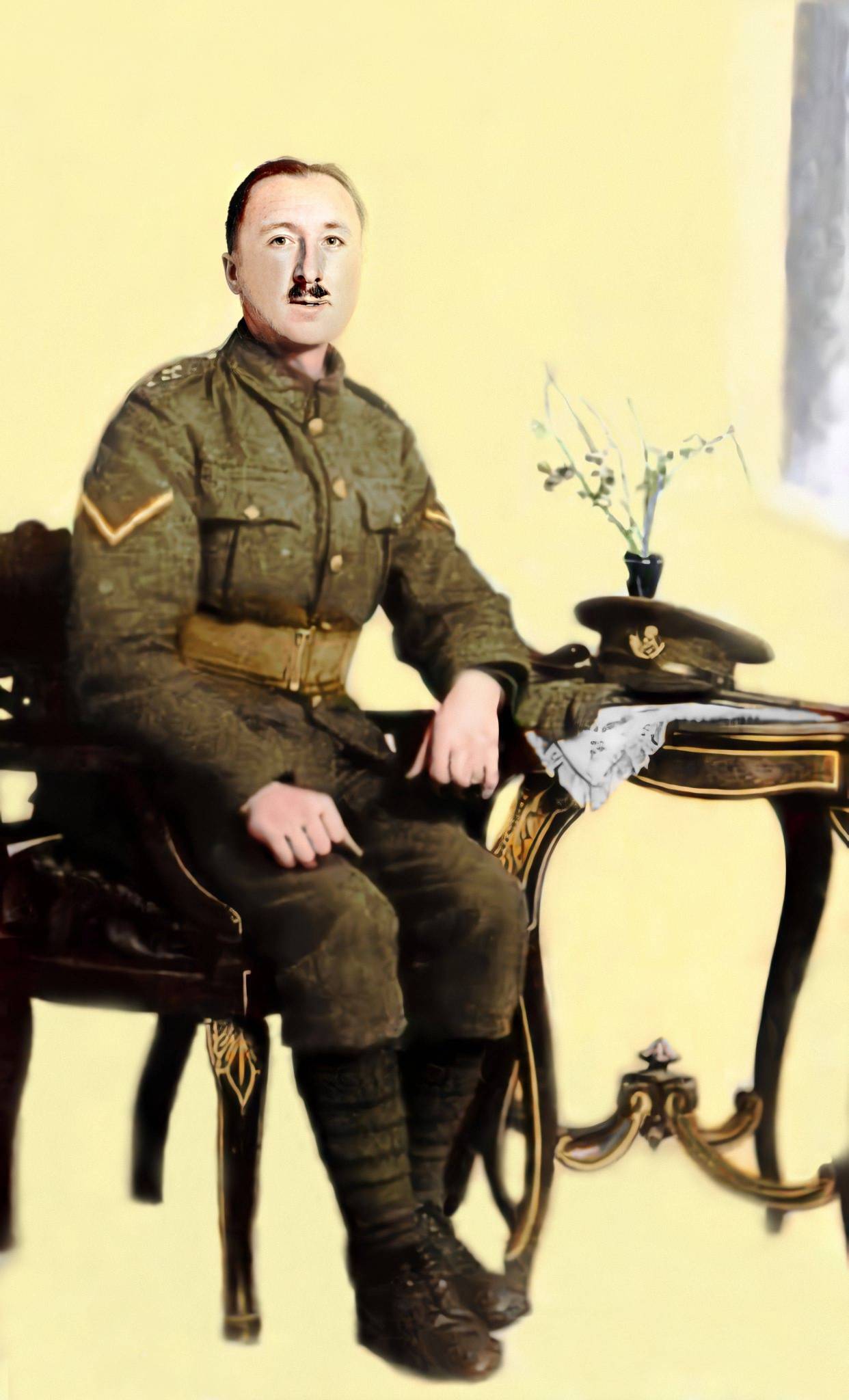L/Cpl
Herbert James Pitchford
Information about birth
|
Year of birth: 1876 |
|
Place of birth: St. George's, Telford, Shorpshire, England, United Kingdom |
General information
|
Last known residence: 9 Market Place, Shifnal, Shropshire, England, United Kingdom |
|
Profession: Licensed Victualler |
Army information
|
Country: England, United Kingdom |
|
Force: British Expeditionary Force |
|
Rank: Lance Corporal |
|
Service number: 55764 |
|
Enlistment place: Ironbridge, Shropshire, England, United Kingdom |
|
Units: — Welsh Regiment, 10th Bn. (1st Rhondda) (Last known unit) |
Information about death
|
Date of death: 02/08/1917 |
|
Place of death: Marsouin Farm, Pilkem, Belgium |
|
Cause of death: Killed in action (K.I.A.) |
|
Age: 41 |
Memorial
|
Ypres (Menin Gate) Memorial Panel: 37 W |
Distinctions and medals 2
|
British War Medal Medal |
|
Victory Medal Medal |
Points of interest 4
| #1 | Place of birth | ||
| #2 | Last known residence | ||
| #3 | Enlistment place | ||
| #4 | Place of death (approximate) |
My story
Herbert James Pitchford was a victualler from Shifnal, Shropshire. Lance corporal Pitchford was part of the 10th Battalion Welsh Regiment, 114th Brigade, 38th Division. At the end of July 1917, his battalion was deployed in the Battle of Pilckem Ridge.
On the 30th of July 1917, preparations were made for an attack. At 9 p.m. his battalions moved to the assembly point at Helme Trench and the Old Front Line. Several hours later, at 3.50 a.m., the attack was launched. The 10th and 13th Welsh Regiment were the first to attack. Despite the difficult orientation due to the dark, they managed to capture the Blue Line (Gallwitz Farm - Hindenburg Farm) in front of Marsouin Farm. They encountered little opposition. Many German soldiers were taken prisoner at Caesar Support. Further attacks were taken up by the 15th and 14th Welsh Regiment who captured Pilkem Village, Iron Cross and Rudolphe Farm. After the second objective at Candle Trench had been captured, the 10th Battalion was formed up and reorganised near the pond at Marsouin Farm. While subjected to severe bombardments, the 10th battalion provided material, rations and water to the battalions in front. The battalion suffered: several man fainted under their loads and one man even died. All men were near the point of exhaustion. On the 2nd of August at 5 p.m., eventually, the 10th Battalion was relieved.
During these couple of days, 6 officers and 151 other ranks were killed, wounded or missing. Lance corporal Pitchford was one of them. He was reported ‘killed in action’ on the 2nd of August. His body was never found or never identified. Today, he is remembered on the Menin Gate Memorial, panel 37W.
On the 30th of July 1917, preparations were made for an attack. At 9 p.m. his battalions moved to the assembly point at Helme Trench and the Old Front Line. Several hours later, at 3.50 a.m., the attack was launched. The 10th and 13th Welsh Regiment were the first to attack. Despite the difficult orientation due to the dark, they managed to capture the Blue Line (Gallwitz Farm - Hindenburg Farm) in front of Marsouin Farm. They encountered little opposition. Many German soldiers were taken prisoner at Caesar Support. Further attacks were taken up by the 15th and 14th Welsh Regiment who captured Pilkem Village, Iron Cross and Rudolphe Farm. After the second objective at Candle Trench had been captured, the 10th Battalion was formed up and reorganised near the pond at Marsouin Farm. While subjected to severe bombardments, the 10th battalion provided material, rations and water to the battalions in front. The battalion suffered: several man fainted under their loads and one man even died. All men were near the point of exhaustion. On the 2nd of August at 5 p.m., eventually, the 10th Battalion was relieved.
During these couple of days, 6 officers and 151 other ranks were killed, wounded or missing. Lance corporal Pitchford was one of them. He was reported ‘killed in action’ on the 2nd of August. His body was never found or never identified. Today, he is remembered on the Menin Gate Memorial, panel 37W.
Sources 8
|
10 Battalion Welsh Regiment, (The National Archives, KEW (TNA), WO 95/2559/1 ). https://www.nationalarchives.gov.uk/ Sources used |
|
British Army World War I Medal Rolls Index Cards, 1914-1920 (The National Archives, Kew (TNA), WO 372). https://www.nationalarchives.gov.uk/ Sources used |
|
British Army World War I Service Medal and Awards Rolls, 1914-1920 (The National Archives, Kew (TNA), WBO 329). https://www.nationalarchives.gov.uk/ Sources used |
|
Census Returns of England and Wales, 1891 (The National Archives, Kew (TNA), RG12). https://www.nationalarchives.gov.uk/ Sources used |
|
Census Returns of England and Wales, 1901 (The National Archives, Kew (TNA), RG13). https://www.nationalarchives.gov.uk/ Sources used |
|
Census Returns of England and Wales, 1911 (The National Archives, Kew (TNA), RG14). https://www.nationalarchives.gov.uk/ Sources used |
|
McCarthy, Chris. Passchendaele: The Day by Day Account (Londen: Arms & Armour Press, 1995), 31-32. Sources used |
|
Steven, John. The Welsh at War: Through mud to victory, Third Ypres and the 1918 Offensives (Barnsley: Pen & Sword Military, 2018), 9-12. Sources used |
